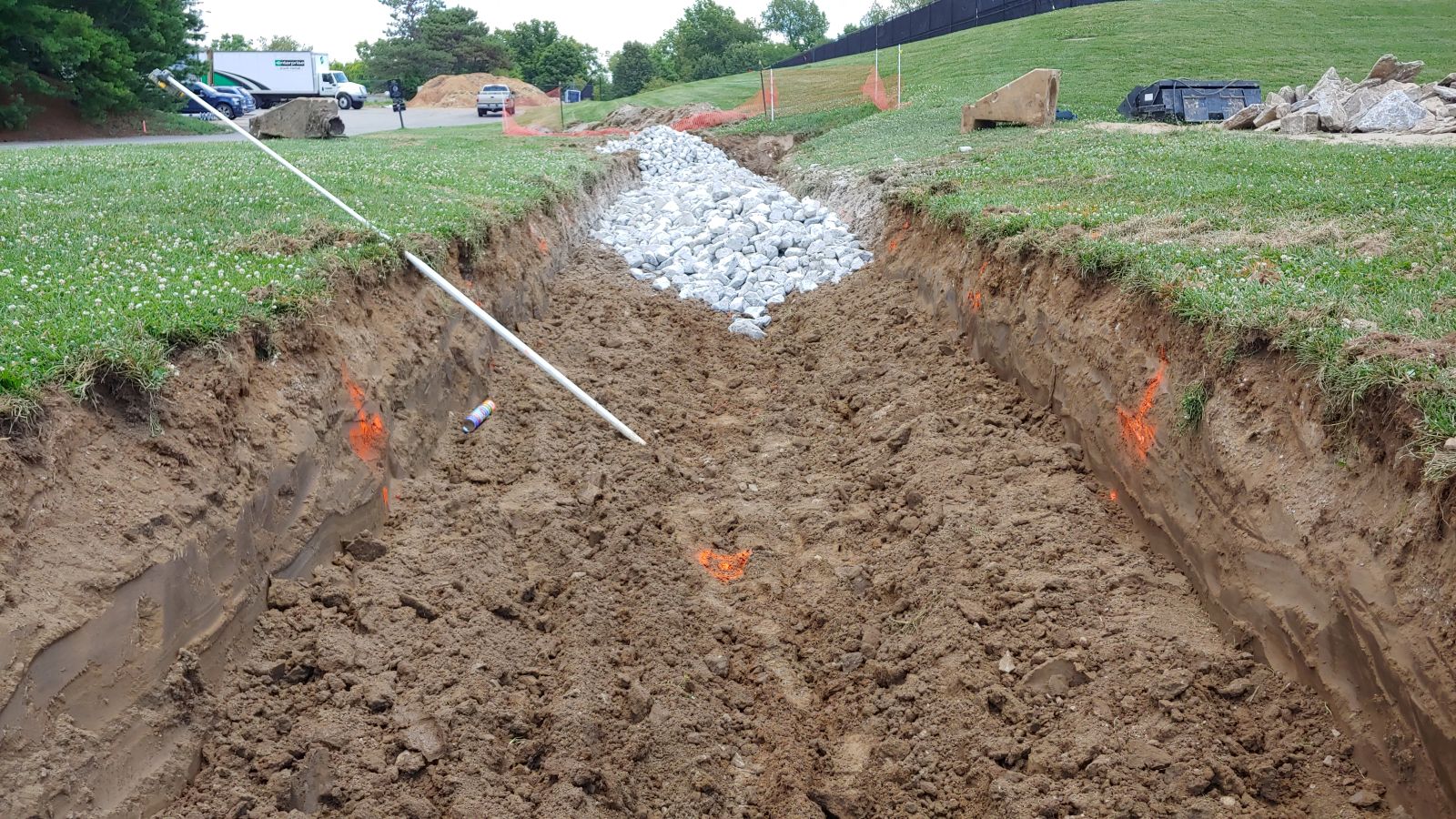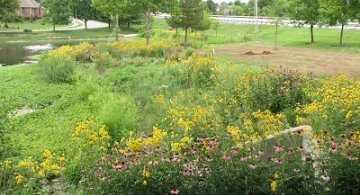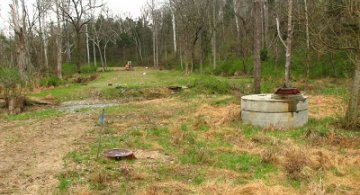Stormwater Treatment
Key Features:
- Bioretention basin
- Design / Build Stream and Stormwater Solutions approach
- Native riparian planting
- Pollinator habitat
- Outdoor classroom
- Ongoing stewardship of riparian plantings
It’s unusual to find a modern facility with a coal pile these days. Even rarer is an urban stormwater project built to treat it.
The University of Kentucky has been a central part of Lexington, KY since 1865. As the campus grew, so did the needs. At one time, building interiors were heated by radiators, fed by a distribution system of steam lines that went back to a central boiler. These systems were powered by one of Kentucky’s most notable exports: coal. Through the years, the University of Kentucky has been updating and modernizing its operations and energy systems. As the campus facilities were upgraded with higher efficiency units, coal consumption reduced, and campus stockpiles lingered in stand-by.
An existing, grassed waterway was difficult to mow and didn’t help mitigate water conditions. The purposes of this project were to improve water quality, create greater ecological benefits to the watershed and provide an on-campus demonstration site. The installation of limestone rock within the channel worked to both buffer the pH of stormwater runoff from the coal pile as well as slow the flow rate and filter pollutants. A section included a mixture of sand, soil, compost and biochar to create a bioretention filter. Work also included the repair of existing culverts and improve the utility and appearance of the area with headwalls made from stacked limestone. The planting of native wildflowers and grasses helped promote pollinator habitat and reduce mowing maintenance. An outdoor classroom was incorporated with large stones to create a gathering space and venue for outdoor learning.
Project Partners
-
EcoGro
-
Stantec Consulting, Inc.
-
University of Kentucky
Funding Partner




















